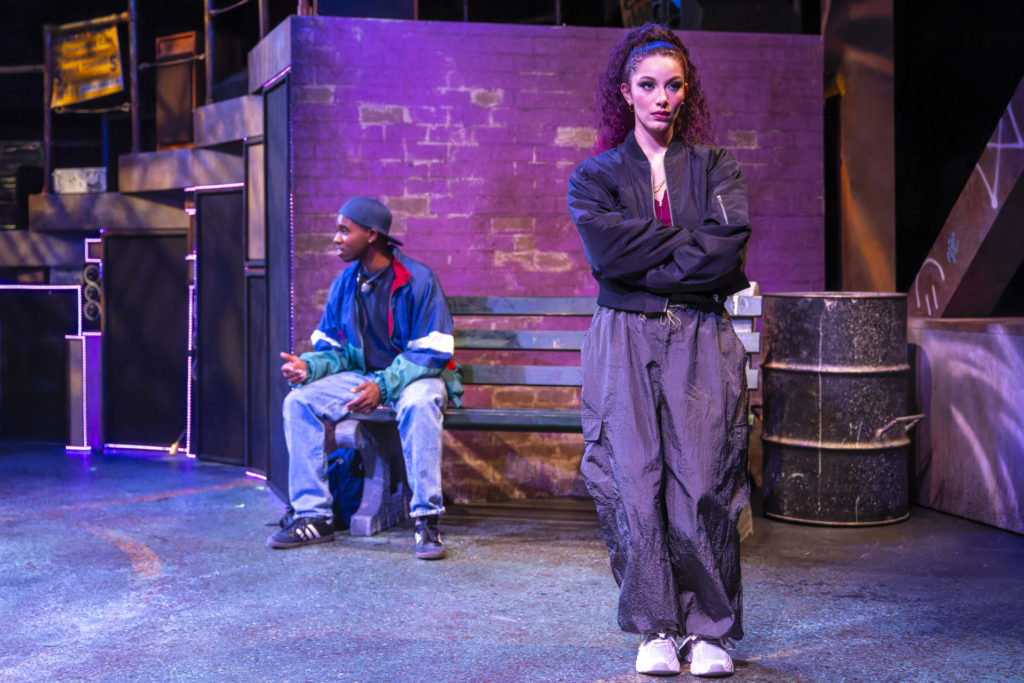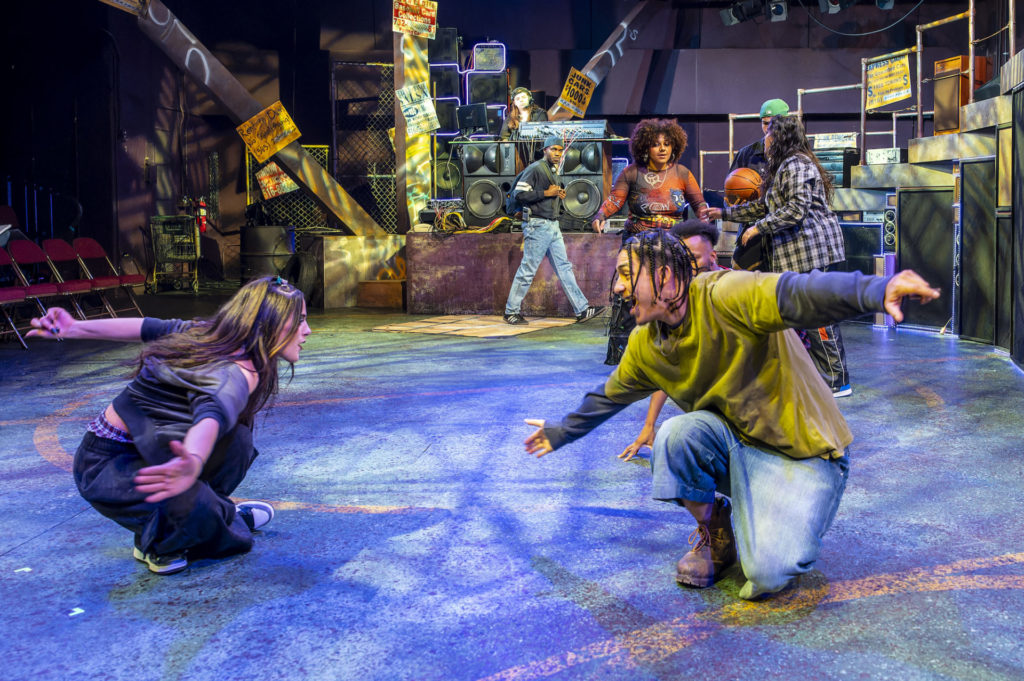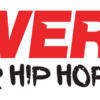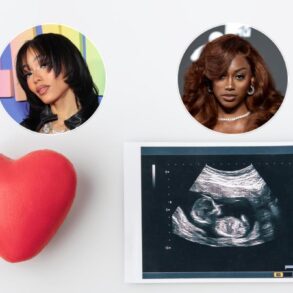The Realness, written by Idris Goodwin in 2016, is a story combining elements of rap and hip-hop with a romance for the emotional resonance and a history lesson for the intellectual one. Goodwin’s play How We Got On was the first in his “Break Beat Play” series, written in 2012. Four years later, The Realness would become the second break beat play to be put on stage. It was released and performed in 2016 at the Merrimack Repertory Theatre in Lowell, MA.
The set is a wonderfully composed snapshot of the play’s late 90s hip-hop and rap themes and setting. From the milk carton basketball hoop to the turntable setup, the static nature of the set design makes it hard not to appreciate the mise en scène and messages of the play. Even with a stationary set such as this, there’s movement for sure. Mostly from the ensemble who switch the props to establish a new scene. Often T.O.’s character overshadows the changing scenery with his wit and charm. Most of the time it doesn’t affect the story, but it does make focusing on other more subtle aspects of the play’s subtext harder to spot.

The play’s plot centers on a young suburban Black kid who ventures out into the urban landscape for school to become a hip-hop journalist and attend college. The bright eyed and bushy tailed mentality of the protagonist gets him into trouble more than a few times in key moments of tension for the audience. For a story like this, you want a strongly written protagonist. The constant and comedic asides to the audience early on give the character a certain likeability and uniqueness from other characters in the play. Jamal Turner’s fish out of water struggle is both delightful and surprising at times. The joke about his birth name — Tom — and how saying T.O. sounds like Tío — meaning uncle in Spanish — gives the humor a certain wit and self-awareness.
With references to rap legends and icons like Biggie and Tupac, The Realness isn’t afraid to let you know about its influences. The playwright did a video about the top 5 references in his play where he explains some of the reasoning behind their inclusion. While not required to enjoy the story, it was a cool easter egg hunt trying to find the callouts and callbacks to famous rappers before or after seeing the play. Some of them are well known outside of the fanbase, but a lot aren’t. Take the role of the female lead, Prima, who is a fictionalized version of the real-life rapper Lauryn Hill.
Prima, played by Jailene Torres, has a background the exact opposite of Tom’s own. Where T.O. comes from a more privileged upbringing, Prima has had to struggle like so many others growing up systematically impoverished. That intersectionality of class, race, and gender all bubbles beneath the surface and informs the character’s decisions throughout the play. Even if it’s not explicitly stated in the dialogue, you can feel the weight of the words she says both in her dialogue and rap repartee. Prima’s first rap performance was her strongest out of the show. Considering the amount of scenes she is in, Torres makes the most out of her time onstage.




One aspect of the plot that I wasn’t a fan of was having Prima becoming his romantic partner being T.O.’s goal for him becoming a hip-hip journalist. It’s not an understatement to say that T.O.’s motives are less than altruistic regarding Prima. He flat out says that he wants to break Styles and her up, going so far as to write it down in one of his journalism assignments for school.
The school scenes between T.O. and his teacher, Professor Francine Brown — played by Y’vonne Rose Smith — act as a non-linear frame narrative. Coming in at key points throughout the story in both space and time, these scenes use T.O.’s meetings with his teacher about his assignment as stepping stones for his growth as a journalist and a person: both in a forward progression and the occasional stumble backward.
There wouldn’t be much of a story if there weren’t complications involved, especially in a romance. Rather than go the predictable cliché romantic comedy route of a failure to communicate wedging them apart, Goodwin has them talk (shout) at each other about important things in a relationship, like trust and forgiveness. Both Jamal Turner and Jailene Torres give it their all in these scenes. Their raw and unfiltered passion retroactively enhances the earlier parts of the play and builds on their characters. While I expected a sprint to the end, they ran a marathon.




The characterization of the two other lead roles — Roy and Styles — is efficient and in some ways makes them more distinctive than the two leads of T.O. and Prima. The stuttering and bashful Roy who can turn his speech disfluency off when he raps is a nice eccentricity of the character. His opposite — Lord Styles — is the kind of person who thinks he can retire after releasing one album. What makes Styles unique from a stereotypical bragger is his tendency to over-extrapolate something bad into something worse, and usually more ridiculous. The actor playing him, Noah Smith, achieved anger in one scene, and sadness and fear in another. In this way, Smith makes the character more human and provides a source of empathy for the story’s two-pronged antagonist.
The Realness takes the historical fiction aspect of Hamilton and combines it with the modern-day sensibilities of In the Heights. The play strips away the instrumental parts of the two Broadway productions by Lin-Manuel Miranda, but keeps the power and emotional resonance in their unique take of adding rap and hip-hop songs to Broadway, an industry not well-known for producing songs outside of show tunes. The Realness’ motifs of the rap, hip-hop and R&B genres, along with the culture, however, are as relevant today as they were 30 years ago.
This post was originally published on this site be sure to check out more of their content.








